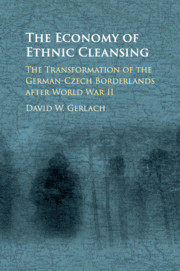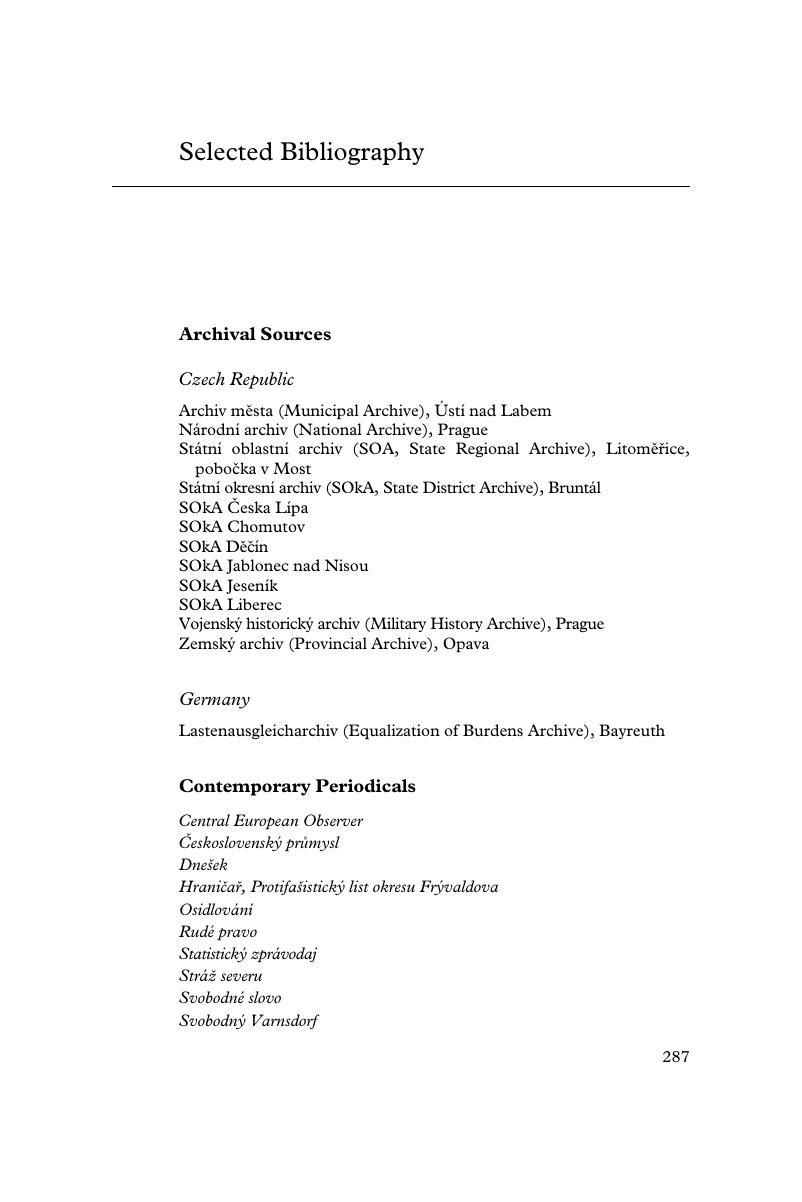 The Economy of Ethnic Cleansing
The Economy of Ethnic Cleansing Book contents
- The Economy of Ethnic Cleansing
- The Economy of Ethnic Cleansing
- Copyright page
- Contents
- Figures
- Maps
- Acknowledgments
- Abbreviations
- Introduction
- 1 In The Wake of War: Expulsions, Violence and Borderland Life
- 2 Divisions Within the Nation: Resettlement, Local Power and Settler Conflicts
- 3 Persian Rugs and Well-Appointed Farms: The Politics of Expropriation
- 4 German Workers, Czech Settlers and Labor Politics
- 5 Consolidating Borderland Industries: From Confiscation to Nationalization
- 6 Borderlands Transformed
- Conclusion
- Selected Bibliography
- Index
- References
Selected Bibliography
Published online by Cambridge University Press: 27 November 2017
- The Economy of Ethnic Cleansing
- The Economy of Ethnic Cleansing
- Copyright page
- Contents
- Figures
- Maps
- Acknowledgments
- Abbreviations
- Introduction
- 1 In The Wake of War: Expulsions, Violence and Borderland Life
- 2 Divisions Within the Nation: Resettlement, Local Power and Settler Conflicts
- 3 Persian Rugs and Well-Appointed Farms: The Politics of Expropriation
- 4 German Workers, Czech Settlers and Labor Politics
- 5 Consolidating Borderland Industries: From Confiscation to Nationalization
- 6 Borderlands Transformed
- Conclusion
- Selected Bibliography
- Index
- References
Summary

- Type
- Chapter
- Information
- The Economy of Ethnic CleansingThe Transformation of the German-Czech Borderlands after World War II, pp. 287 - 293Publisher: Cambridge University PressPrint publication year: 2017


